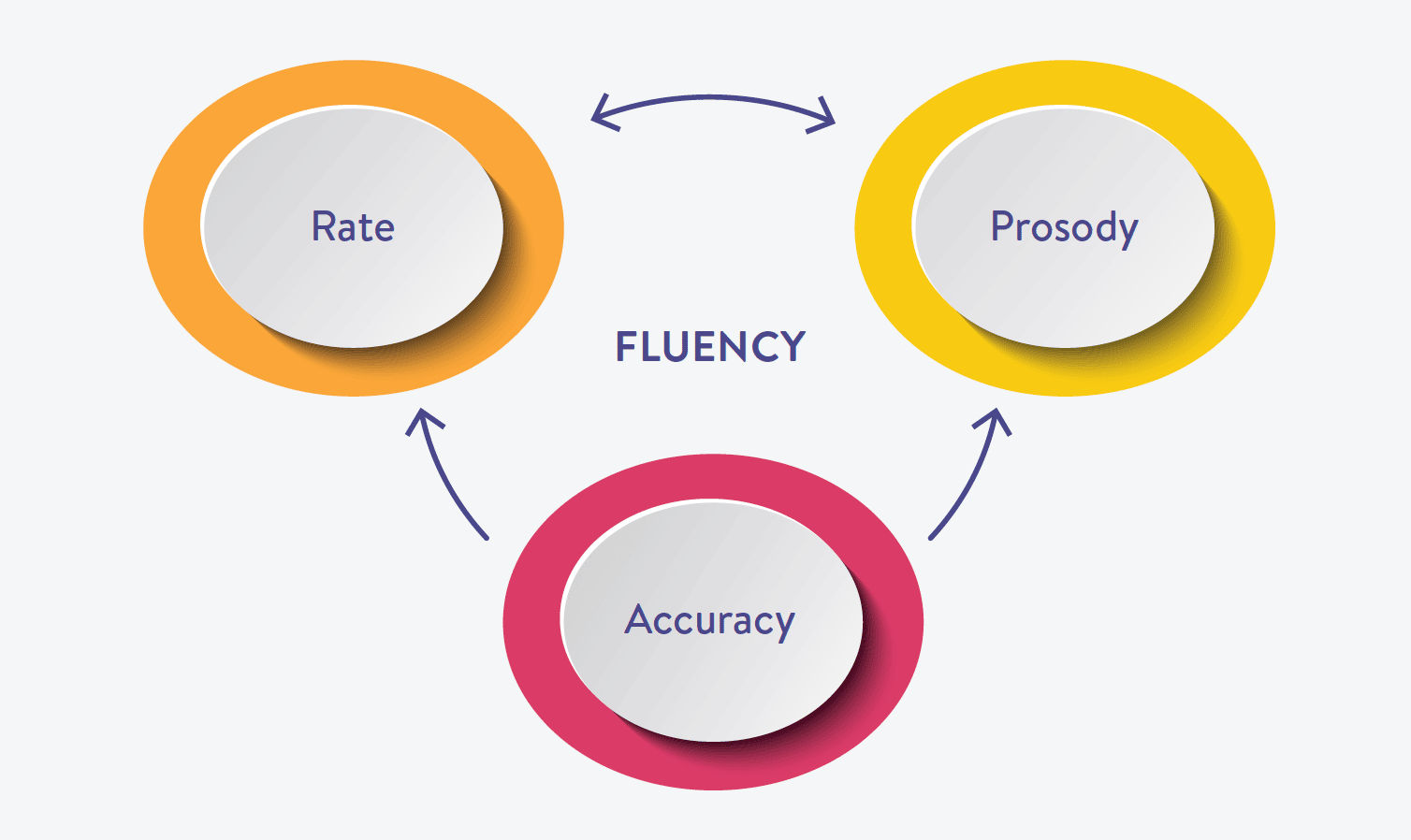Text or passage reading fluency is generally defined as having three components: accuracy, rate, and prosody (or expression). Children have poor text reading fluency if they read many words of a passage incorrectly, if they read text slowly and with obvious effort, or if they read in a stilted or robotic way.
The three components of fluency, and the interactions between them, have been studied in detail. It is useful to understand these concepts in order get a better sense of how they inform teaching practice, especially for children whose fluency is affected by difficulties with one or more of them.

1. Accuracy
Accurate reading requires students to be able to pronounce written words correctly. Correct pronunciation of a word allows the young reader to access its meaning from their existing oral vocabulary – the words they use and recognise in spoken language.
Accurate word reading is dependent on the ability to decode words efficiently and the process of ‘orthographic mapping’. Briefly, when we decode a word, we use knowledge of the relationships between letters (graphemes) and speech sounds (phonemes) and blend them together in the correct order to form a word.
Initially, students do this in a conscious way, sound by sound — ‘sounding the word out’. After they have decoded a word multiple times and stored it in their memory, it becomes a ‘sight word’, according to Ehri’s definition: familiar words that can be accessed by memory.
2. Rate
The rate at which students read is important because slow reading hinders comprehension.
Automaticity is the effortless and spontaneous recognition and production of a word. Effortlessness is apparent when we see someone reading for long periods of time without fatigue and when they are reading in an easy and natural way. Automatic word reading is important because it allows the reader to pay attention to the meaning of the text rather than decoding the words.
Reading speed does not suddenly go from slow to fast. For children who are learning to read, their speed increases with repeated practice, as they build up their orthographic memory and their reading stamina.
Text reading speed is dependent on more than just singular word reading speed. Students read more quickly when they are able to break text into syntactic and semantic phrases and clauses ‘on the fly’ (Sabatini et al., 2019). This demonstrates the reciprocal relationship between fluency and comprehension when students are reading more complex text.
Therefore, when teaching fluency to students it is better to focus on reading rate rather than speed per se. ‘Speed’ suggests that faster is always better, but that is not necessarily the case. If students think that the main goal is to read as quickly as possible, they may not attend to meaning. The goal is to achieve a pace that allows for appropriate phrasing and which acknowledges punctuation and changes in tone, but which is quick enough to enable comprehension. Generally, reading at a pace that mirrors speech is optimal.
3. Prosody
Prosody is the third element of text reading fluency. Prosody means reading with expression – with the appropriate rhythm, tone, pitch, pauses, and stresses for the text. Prosody depends on both accuracy and rate. In order to read with expression, the student must be able to read words efficiently and break the text into meaningful syntactic and semantic units.
Prosody has a reciprocal relationship with comprehension. For a student to read with prosody, they must be gaining some understanding of the text as they read it to know the appropriate intonations and pitch to use. When reading with prosody, students are more likely to be processing information as they read it, which leads to better retention and comprehension.
Students who exhibit good prosody in oral reading tend to have higher comprehension scores from silent reading as well (Zimmerman et al., 2019).
